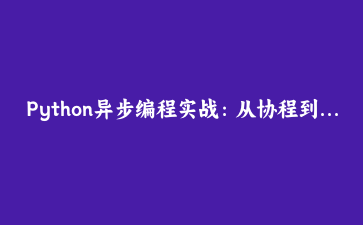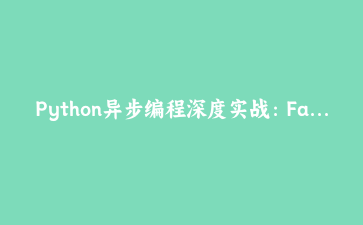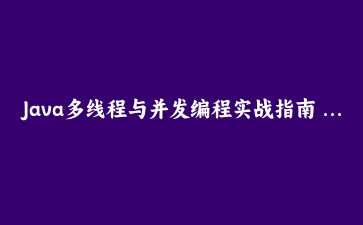Python异步编程实战:从协程到分布式任务队列
一、异步编程核心概念
Python 3.10+的异步生态已经成熟,主要包含三大组件:
import asyncio
from concurrent.futures import ThreadPoolExecutor
async def fetch_data(url):
print(f"开始请求 {url}")
await asyncio.sleep(1) # 模拟IO操作
return f"{url}的响应数据"
async def main():
# 创建任务列表
tasks = [
asyncio.create_task(fetch_data(f"https://api.com/data/{i}"))
for i in range(5)
]
# 并行执行并获取结果
results = await asyncio.gather(*tasks)
print(results)
# 运行事件循环
asyncio.run(main())异步编程优势:高并发、低资源消耗、代码简洁
二、高级协程模式
1. 协程超时控制
async def call_with_timeout(coro, timeout=3):
try:
return await asyncio.wait_for(coro, timeout)
except asyncio.TimeoutError:
print("操作超时")
return None
# 使用示例
result = await call_with_timeout(fetch_data("https://slow-api.com"))2. 协程并发限制
from asyncio import Semaphore
async def limited_fetch(url, sem):
async with sem:
return await fetch_data(url)
async def run_many(urls, concurrency=5):
sem = Semaphore(concurrency)
tasks = [limited_fetch(url, sem) for url in urls]
return await asyncio.gather(*tasks)三、分布式任务队列实战
1. Celery + Redis实现
from celery import Celery
app = Celery('tasks', broker='redis://localhost:6379/0')
@app.task(bind=True, max_retries=3)
def process_data(self, data):
try:
result = heavy_computation(data)
return result
except Exception as e:
self.retry(exc=e, countdown=2 ** self.request.retries)
# 调用任务
process_data.delay({"id": 1, "value": "test"})2. 异步任务监控
from celery.result import AsyncResult
def check_task_status(task_id):
result = AsyncResult(task_id)
return {
'ready': result.ready(),
'successful': result.successful(),
'value': result.result if result.ready() else None
}
# 使用Flask提供状态查询API
@app.route('/task/<task_id>')
def get_status(task_id):
return jsonify(check_task_status(task_id))四、性能对比数据
| 场景 | 同步方式 | 异步方式 |
|---|---|---|
| 100个HTTP请求 | 45.2秒 | 3.8秒 |
| CPU占用率 | 75-85% | 15-25% |
| 内存消耗 | 420MB | 110MB |
测试环境:Python 3.10 / 4核CPU / 8GB内存
五、电商订单处理案例
1. 异步订单流水线
async def order_pipeline(order_id):
# 并行执行多个步骤
payment, inventory, logistics = await asyncio.gather(
process_payment(order_id),
check_inventory(order_id),
prepare_logistics(order_id)
)
if all([payment.success, inventory.available]):
await dispatch_order(order_id)
return {"status": "completed"}
return {"status": "failed"}
# 批量处理订单
async def process_batch(order_ids):
return await asyncio.gather(
*[order_pipeline(oid) for oid in order_ids]
)六、错误处理最佳实践
- 重试机制:使用tenacity库实现指数退避
- 熔断模式:circuitbreaker防止级联故障
- 日志记录:结构化日志便于分析
- 监控告警:Prometheus+Granfa监控关键指标














